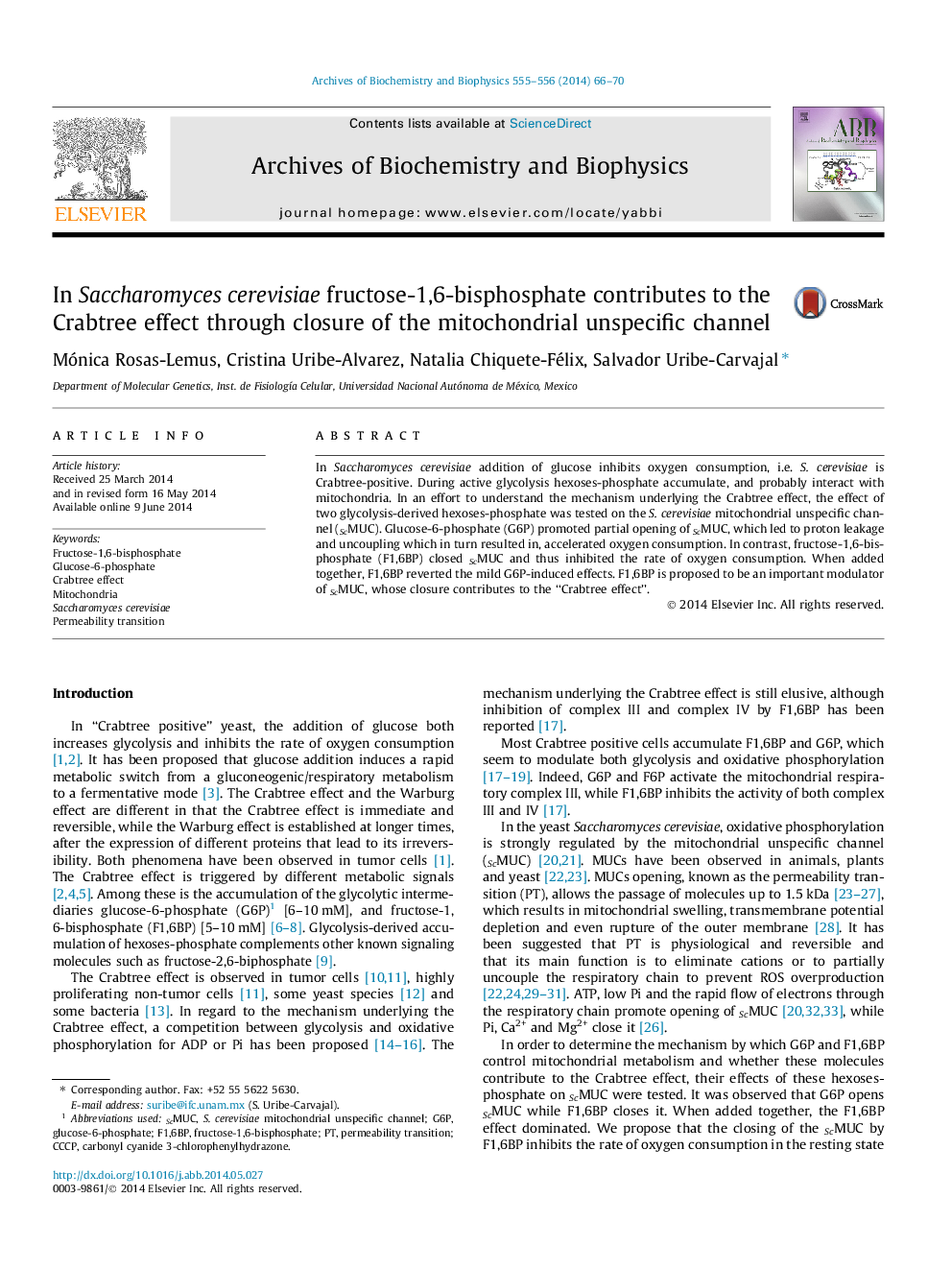| Article ID | Journal | Published Year | Pages | File Type |
|---|---|---|---|---|
| 1925147 | Archives of Biochemistry and Biophysics | 2014 | 5 Pages |
•In S. cerevisiae F1,6BP promotes closure of ScMUC.•A closed ScMUC enhances the mitochondrial membrane impermeability to protons.•The effect of F1,6BP on ScMUC contributes to the Crabtree effect.
In Saccharomyces cerevisiae addition of glucose inhibits oxygen consumption, i.e. S. cerevisiae is Crabtree-positive. During active glycolysis hexoses-phosphate accumulate, and probably interact with mitochondria. In an effort to understand the mechanism underlying the Crabtree effect, the effect of two glycolysis-derived hexoses-phosphate was tested on the S. cerevisiae mitochondrial unspecific channel (ScMUC). Glucose-6-phosphate (G6P) promoted partial opening of ScMUC, which led to proton leakage and uncoupling which in turn resulted in, accelerated oxygen consumption. In contrast, fructose-1,6-bisphosphate (F1,6BP) closed ScMUC and thus inhibited the rate of oxygen consumption. When added together, F1,6BP reverted the mild G6P-induced effects. F1,6BP is proposed to be an important modulator of ScMUC, whose closure contributes to the “Crabtree effect”.
Graphical abstractFigure optionsDownload full-size imageDownload high-quality image (36 K)Download as PowerPoint slide
